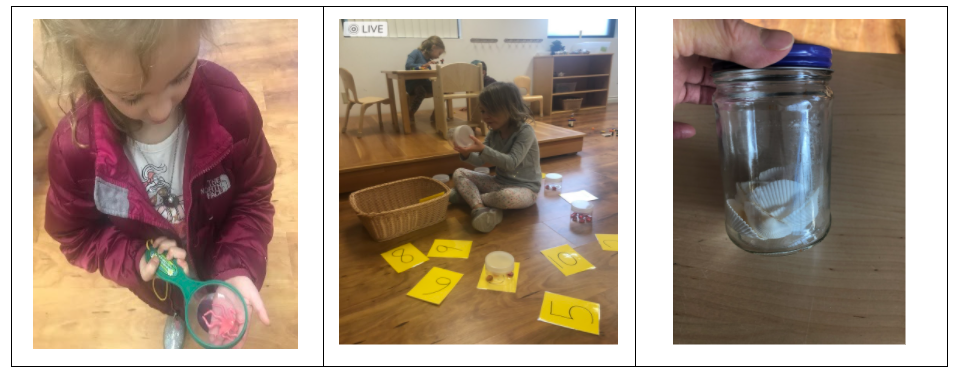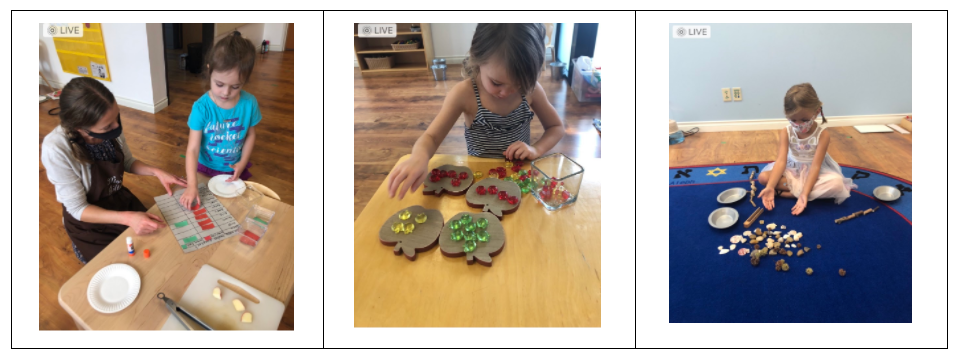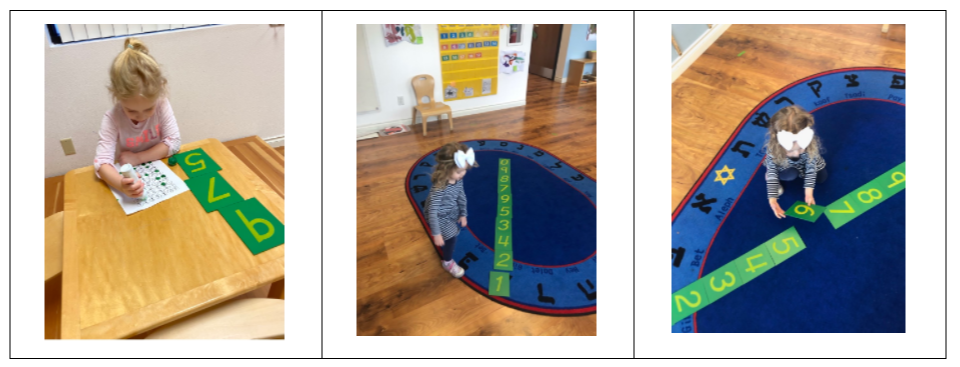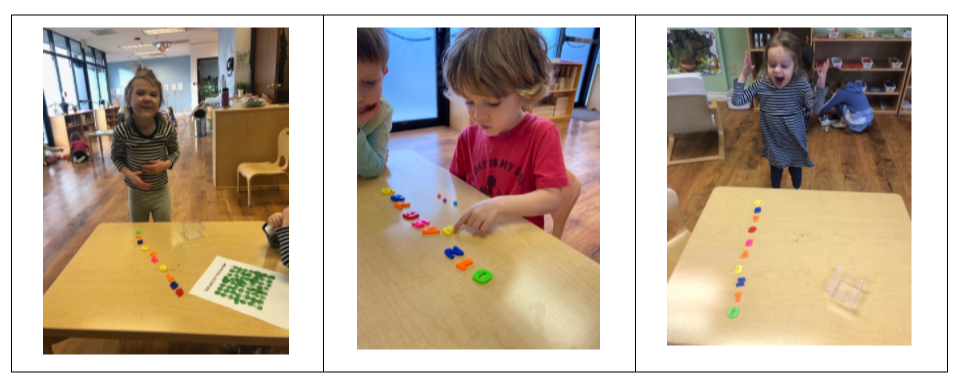The "Hows" and "Why" of learning through play at the Gan-Garrett Jewish Preschool Part 1: MATH
At the Gan, we see every child as a precious individual with their own learning style, their own interests, and unique and valid age and stage of development. It is our job to nurture these precious children. You may see our website for a full view of our philosophy.
When speaking specifically about MATH and how it applies to preschoolers, we learn from NAEYC (National Association for the Education of Young Children), "A child's math knowledge at the start of Kindergarten predicts later academic achievement better than early reading or attention skills." This may seem incredibly daunting. Yet, as Early Learning professionals, we know that creating a "math rich" environment, where the learning is done through the research-based practice of play, is not only possible, but extremely achievable. This is exactly how we present math, and all learning domain areas at the Gan.
When we think about preschool-aged children learning Math skills, it's likely that counting from 1-10 is the first thing that comes to mind. We count how many children are present, we count the days on our calendar, we count the boys and girls to find out which group has more. We do simple addition and subtraction when we ask "How many will there be when... arrives?" Children can count "candles" on the tape menorah on the floor, or the candles on the menorah in a book as we learn about Chanukah. During our Ocean and Sea Creature unit, one of our children counted the "legs" (as she called them) on an octopus, and, drawing from previous knowledge, excitedly exclaimed, "Itsy Bitsy Spider also has 8 legs!!" We develop the concept of "How many...?" when we incorporate Estimation Jars. Children also dabble in simple fractions when they learn that 2 small blocks equals the size of a larger block (on the tape menorah on the floor).


Math is so much more than counting.
As we learned about, and celebrated Rosh Hashana, we sampled sweet and tart apples to find out which tasted the sweetest. We graphed the results, counted, them and analyzed them. The children had a visual of which apples tasted sweeter.
We have many materials, toys and games available for investigation and play each day. Often the children sort and classify objects by 'kind of object', by color, by size, shape, etc. As Morahs, we ask the children to tell us how they sorted the objects. This helps us grasp their understanding of that concept, and gives opportunities for the children to verbalize their understanding. We also set out activities which may prompt children to put objects in order according to size (seriation). We sit with children and engage them with open-ended questions which may prompt them to explore more deeply. (Please see our previous Blog).


One of the ways we support recognition and identification of numbers is by playing a game called, "Find the numbers". While a child closes their eyes, a Morah hides green boards numbered 0-9 throughout the room. The child then finds the number boards. This is a great example of how all children at the Gan can have success and expand their knowledge, regardless of whether they are 2.5 or 5 years of age, and regardless of their comprehension of numbers. The child who is beginning to understand can easily identify the bright green boards, and find them; the Morahs can name the numbers as they are found. Some children may be able to name a couple of numbers, while some children may be able to name all of them. As Morahs, we also develop a variety of ways to extend the learning. For instance, we could ask a child if they would like to use a 'dobber' to put a dot on each number (on a pre-numbered paper) as each number is found. We can work with a child to put the numbers in order. Or they may be able to put the numbers in order on their own. Activities at the Gan can be played in a variety of ways, depending on the age, stage, and interests of each child.


Morahs demonstrate the concept of patterns such as when we introduced the ocean theme related stamps during our recent unit. Immediately following that Circle activity, one child created a pattern with the stamps by color (not object).Some of our books have fun patterns, and we "read" them together as a class. Whenever we see patterns in our room, on items of clothing, or in any form, we' read them', to help reinforce the idea that a pattern is a repetition of colors, lines, shapes, etc. It's exciting when when a child calls from across the room, "Morah!! Come see the pattern I made!" We can extend the learning of patterns by demonstrating a slightly more complex pattern than an A/B pattern. For instance, we can introduce an A/BB/A/BB pattern.

Language skills play role in Math, and indeed, most learning domains can cross over into each other, deepening the learning. Children can learn math while engaging in conversations with their friends, with stories, dramatic play, art, science or physical activities.
There is something for every child and learning style at the Gan. Children who are tactile learners benefit from touching and manipulating all materials. Children who learn in a very kinesthetic way benefit from being able to move around the room and playground with the materials. Children who may be more visual learners have a vast variety of materials and ways of using them, as well as seeing them used by others. Children who may tend to learn more in an auditory way hear vocabulary words, simple phrases and explanations, and engage in back and forth conversations, making their learning more solid. And just as learning domains cross over to each other, learning styles can too.


Each child is a gift from Hashem, shared with us for just a few hours a day. We seek to create an environment where the learning, in this case, math skills, can meet each child where they're at, and can be a vehicle for expanding their experiences and knowledge, in a warm and safe environment.


